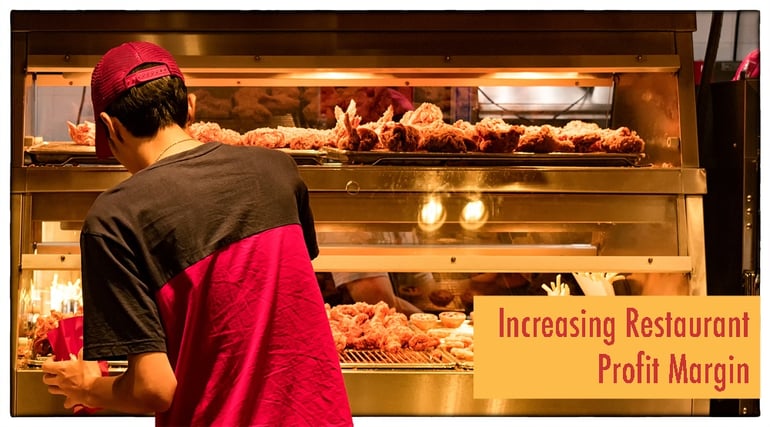
Finding new ways to maximize the overall profitability of a restaurant business is on the mind of every restaurant owner. Whether you have a few restaurants or a few hundred, you’re constantly trying to think up ways to beef up the profit margin. Your executives analyze the numbers, think up ideas to control costs, cut down on food waste, offer Limited Time Offers, cut back labor hours and eliminate overtime, all with the ultimate goal of increasing profitability. But what steps are taken to ensure that any of these ideas will prove successful? Are they examining performance metrics in order to track and evaluate what steps are effective and which areas need improvement?
Increase Gross Sales
First and foremost, in order for the restaurant business to succeed, the sales must support the cost of doing business. You understand that increasing gross sales to grow restaurant profits is key but you also know that simultaneously, operating costs and food costs need to stay low. If you increase gross sales but also have an increase in any of your variable costs (food, staffing, utility usage), you really didn’t increase profits at all. By analyzing trends using restaurant BI solutions like Mirus Enterprise, you can find the profit patterns to improve the bottom line and ensure your restaurants yield fruitful returns.
One way to get better returns is to upsell the right products. Depending on the kind of restaurants you operate, you may offer high-dollar menu items to increase the guest check average or offer low cost items such as drinks, dessert, etc. Most importantly, all employees must remember to consistently be upselling to every single customer. Good managers will make constant reminders and help motivate your team while maximizing profits. Come up with some strategies that will not only help increase profits but also encourage your employees. Creating a contest to inspire staff is one way to go. Happy employees = satisfied customers. A winning formula at all times.
Effective Labor Allocation
Another way to trim potential fat is labor dollars. But don't rush into blindly cutting hours until you're able to study your establishment's historical data with regard to busiest and slowest times. The image below shows labor allocation and customer demand by hour of the day. In the best case scenario, the two lines should be close to each other and sales (the blue line) should never be above labor (the dark line). The blue line being above the dark line indicates the restaurant was understaffed, and your customers probably experienced slow service.

Based on this image, you can see that starting at 10 am and all the way until 7 pm, this restaurant was drastically understaffed. The restaurant was short on help and unable to provide diners with the best possible customer service (it's also likely that staff was too slammed to even think about upselling so the restaurant probably saw loss there too). Later on in the evening, between 8 and 10 pm, however, they had more staff than needed. The lesson here is this: Maybe the restaurant did not need to cut back hours at all. All they needed to do was to take some staff off of the later shift and place them elsewhere in the day where they were needed. You want to be able to take advantage of the upswing in traffic and sales to keep your customers happy (and hopefully not only will they order more but they will be returning).
It's essential to track the days and times that are busiest and schedule accordingly. Failure to plan will consequently take its toll on the customer experience and eventually, your bottom line. Many of Mirus' clients use this type of detailed analysis every day to identify how they can improve the labor schedule for next week. Above store management can use these visualizations to coach their managers to staff more effectively. Using effective labor allocation you can ensure your staff is ready to handle the incoming traffic and, over time, this information will improve and increase your restaurant business’s profitability. When you can reference and learn from historical data, you're that much closer to assuring your restaurant business yields success.
To Summarize
Productive labor allocation, speed of service and employee productivity, along with strategic upselling will all serve to increase the restaurant's profit margin. Increasing profitability won't happen overnight and even the smallest changes can have a big effect. By habitually studying the business's performance metrics, restaurant operators can catch and identify areas in need of improvement and, over time, bring about profitable changes.
Thoughts?
What restaurant profit margin concerns do you have?
About Mirus:
Mirus is a multi-unit restaurant reporting software used by operations, finance, marketing, and IT.
For more information, please visit: www.mirus.com
If you enjoyed this blog, please share it by using the social buttons at the top and make sure to leave your thoughts in the comment section below.








.png?width=50&height=50&name=Mirus%20Logo%20(1).png)